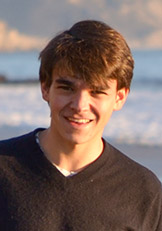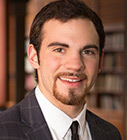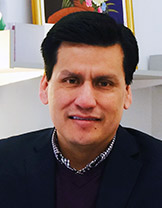 Nine Princeton undergraduates will intern and conduct research internationally this summer as the University’s first Streicker Fellows.
Nine Princeton undergraduates will intern and conduct research internationally this summer as the University’s first Streicker Fellows.
Monthly Archives: April 2015
Stegosaurus plates provide first solid evidence that male, female dinosaurs looked different
 The discovery of a single anatomical difference between males and females of a species of Stegosaurus provides some of the most conclusive evidence that some dinosaurs looked different based on sex, according to new Princeton University research. Existing work had been inconclusive to the point that some paleontologists began to think that male and female dinosaurs did not differ physically from one another.
The discovery of a single anatomical difference between males and females of a species of Stegosaurus provides some of the most conclusive evidence that some dinosaurs looked different based on sex, according to new Princeton University research. Existing work had been inconclusive to the point that some paleontologists began to think that male and female dinosaurs did not differ physically from one another.
Semenov named valedictorian, Hannan selected as salutatorian
Robertson awarded scholarship for postgraduate study at Royal Conservatoire of Scotland
Kruse resets timeline of America as ‘One Nation Under God’
Two teams of Princeton students win Davis Projects for Peace
 Two teams of Princeton University students have received $10,000 grants from the Projects for Peace program, which supports new and creative ideas for promoting peace around the world. This summer, seniors Darya Koltunyuk and Stephanie Liu plan to introduce chamber music to young people in New York City; and Haraya Buensuceso, a sophomore, and Jacob Scheer, a senior, aim to bring together budding entrepreneurs to address the issue of climate change in the Philippines.
Two teams of Princeton University students have received $10,000 grants from the Projects for Peace program, which supports new and creative ideas for promoting peace around the world. This summer, seniors Darya Koltunyuk and Stephanie Liu plan to introduce chamber music to young people in New York City; and Haraya Buensuceso, a sophomore, and Jacob Scheer, a senior, aim to bring together budding entrepreneurs to address the issue of climate change in the Philippines.
Trevino named Graduate School associate dean for diversity and inclusion
Princeton consortium formed to visualize Big Data
The Rice Crisis: Tracking an asset-price bubble in the check-out line
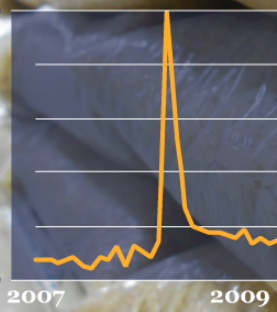 Princeton economist Harrison Hong has spent much of his career working to understand how and why asset-price bubbles form, studying the dot-com bubble in stock prices from 1997 to 2000 and the run-up in global commodity prices from 2003 to 2008. His latest insights, though, come from the check-out line at your local grocery store.
Princeton economist Harrison Hong has spent much of his career working to understand how and why asset-price bubbles form, studying the dot-com bubble in stock prices from 1997 to 2000 and the run-up in global commodity prices from 2003 to 2008. His latest insights, though, come from the check-out line at your local grocery store.
$10 million gift from alumnus funds Music Building at Princeton
Advanced material for prosthetic limbs scheduled for launch to Space Station
 Lenore Rasmussen’s dream of developing a synthetic muscle that could be used to make better prosthetic limbs and more responsive robots will literally become airborne at 4:33 p.m. on April 13 when her experiment will rocket off to the International Space Station from Cape Canaveral in Florida. Rasmussen, a synthetic polymer chemist and founder of Ras Labs, has worked closely with researchers and engineers at the Princeton Plasma Physics Laboratory (PPPL) to develop the material’s ability to adhere to metal.
Lenore Rasmussen’s dream of developing a synthetic muscle that could be used to make better prosthetic limbs and more responsive robots will literally become airborne at 4:33 p.m. on April 13 when her experiment will rocket off to the International Space Station from Cape Canaveral in Florida. Rasmussen, a synthetic polymer chemist and founder of Ras Labs, has worked closely with researchers and engineers at the Princeton Plasma Physics Laboratory (PPPL) to develop the material’s ability to adhere to metal.
Chapel gathering focuses on understanding and overcoming differences
Student engineers’ project expands access to clean water in Kenyan village
 In 2012, Swahili lecturer Mahiri Mwita approached Princeton University’s chapter of Engineers Without Borders (EWB) with the idea of starting a project in the Kuria District of Kenya where he grew up. Three years later, a team of Princeton engineering students has helped design and build an award-winning rainwater catchment system there to provide clean, reliable water, and the group plans to build another system this summer.
In 2012, Swahili lecturer Mahiri Mwita approached Princeton University’s chapter of Engineers Without Borders (EWB) with the idea of starting a project in the Kuria District of Kenya where he grew up. Three years later, a team of Princeton engineering students has helped design and build an award-winning rainwater catchment system there to provide clean, reliable water, and the group plans to build another system this summer.
James Olsen: Perspective on the world’s biggest particle collider coming online again
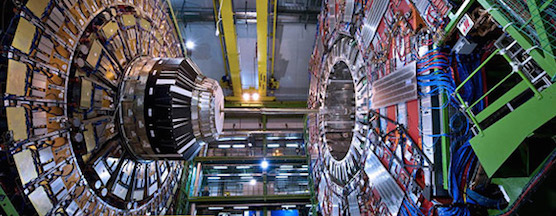 Numerous Princeton University researchers will be ready once the Large Hadron Collider is “switched on” after a two-year hiatus during which it has been upgraded to run at a higher energy. Princeton physics professor James Olsen, who oversees all physics results for the collider’s Compact Muon Solenoid (CMS) detector, discusses the discoveries that lay ahead at the LHC. Having uncovered the Higgs particle during its first run, the collider will now be used to produce insights into some of the universe’s foremost mysteries, including the nature of dark matter and a theory known as supersymmetry.
Numerous Princeton University researchers will be ready once the Large Hadron Collider is “switched on” after a two-year hiatus during which it has been upgraded to run at a higher energy. Princeton physics professor James Olsen, who oversees all physics results for the collider’s Compact Muon Solenoid (CMS) detector, discusses the discoveries that lay ahead at the LHC. Having uncovered the Higgs particle during its first run, the collider will now be used to produce insights into some of the universe’s foremost mysteries, including the nature of dark matter and a theory known as supersymmetry.
Princeton University Library acquires philosopher Derrida’s personal library
 The Princeton University Library has acquired the personal working library of philosopher Jacques Derrida, who died in 2004. Derrida, an Algerian-born French Jewish philosopher, is considered one of the 20th century’s most influential thinkers, writers and critics in the fields of literary criticism, philosophy, art and architecture, linguistics, and political theory, among others.
The Princeton University Library has acquired the personal working library of philosopher Jacques Derrida, who died in 2004. Derrida, an Algerian-born French Jewish philosopher, is considered one of the 20th century’s most influential thinkers, writers and critics in the fields of literary criticism, philosophy, art and architecture, linguistics, and political theory, among others.
Class snapshot: ‘The New Jim Crow’
 This semester, 43 Princeton undergraduates are exploring the political development of America’s racially disparate crime policy in the course “The New Jim Crow: U.S. Crime Policy from Constitutional Formation to Ferguson.” The course, being taught for the first time, is crosslisted with the Center for African American Studies and the Department of Politics.
This semester, 43 Princeton undergraduates are exploring the political development of America’s racially disparate crime policy in the course “The New Jim Crow: U.S. Crime Policy from Constitutional Formation to Ferguson.” The course, being taught for the first time, is crosslisted with the Center for African American Studies and the Department of Politics.
Battery bounce test often bounces off target
Economist Krueger offers first-hand look back at GM, Chrysler rescue
Alan Krueger, a Princeton economist and former economic adviser to President Barack Obama, looks back at the rescue of General Motors and Chrysler during the financial crisis.

